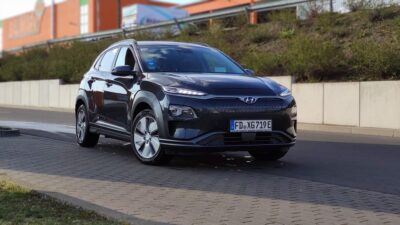As we stand on the brink of a transportation revolution, the integration of self-driving cars into our daily lives marks a pivotal moment in the quest for sustainability. These autonomous vehicles, powered by advanced AI algorithms and electric engines, promise to redefine how we perceive mobility, reduce carbon footprints, and promote greener urban environments. This article explores the transformative impact of self-driving cars on sustainable transport and their potential to reshape our cities.
A New Era of Mobility
The Rise of Electric and Autonomous Vehicles
The synergy between electric and autonomous vehicles (AVs) represents a powerful approach to addressing climate change and urban congestion. EVs offer a cleaner alternative to traditional vehicles by eliminating tailpipe emissions, while autonomous technology can optimize driving patterns, improve traffic flow, and reduce the number of vehicles on the road.
According to the International Energy Agency (IEA), the global stock of electric cars surpassed ten million in 2020, and with advances in battery technology, prices are expected to continue to decline. As this trend continues, integrating self-driving technology into electric cars can lead to further environmental benefits.
Reducing Congestion and Emissions
Self-driving cars are designed to communicate with each other and with traffic management systems. This ability to share information can significantly improve traffic efficiency. By minimizing stop-and-go traffic, optimizing routes, and reducing unnecessary braking, AVs can lower energy consumption and greenhouse gas emissions.
Studies estimate that if 90% of vehicles on the road were autonomous and shared, traffic congestion could reduce by as much as 40%, with corresponding reductions in the environmental impact. Furthermore, fewer cars on the roads translates to less infrastructure expenditure, allowing cities to redirect funds to further sustainable initiatives.
Enhancing Public Transportation
Collaboration with Existing Systems
Rather than replacing public transportation, autonomous vehicles can enhance it. Self-driving shuttles can serve as links between public transport hubs and underserved areas, improving accessibility for those who rely on public transport.
These AVs can operate as on-demand services, ensuring that users have access to transportation during off-peak hours or in areas where traditional transport options are limited. By fostering a multimodal transportation ecosystem, cities can encourage the use of public transport, cycling, and walking, resulting in a more sustainable urban environment.
Shared Mobility and Carpooling
The sharing economy is another critical aspect of sustainable transportation influenced by autonomous vehicles. Ride-sharing platforms utilizing AV technology can significantly increase vehicle utilization rates, decrease the number of vehicles on the road, and alleviate congestion.
With customers able to summon rides easily and safely, the need for individual car ownership diminishes. This shift not only promotes sustainable transport but also reconfigures urban spaces, potentially converting parking facilities into parks or community spaces.
Urban Planning and Infrastructure
Designing Smart Cities
The advent of self-driving cars prompts a reevaluation of urban planning principles. With fewer parking spaces required, urban planners can prioritize green spaces and pedestrian-friendly designs. Smart cities can leverage AV technology to reshape infrastructures, integrating traffic management systems with public transport, cycling lanes, and pedestrian walkways.
Moreover, regulatory frameworks can be developed to ensure that self-driving cars align with a broader vision of sustainable transport. Policies promoting electric vehicle adoption, along with incentives for AV manufacturers and users, can drive an eco-friendly transition.
Challenges Ahead
Despite the potential benefits, the transition to self-driving cars comes with challenges. Public acceptance, safety concerns, and ethical dilemmas surrounding algorithmic decision-making in critical situations raise significant questions. Furthermore, significant investment in infrastructure and technology is required to realize the full potential of autonomous vehicles.
Collaboration among stakeholders—governments, industry leaders, and the public—is crucial to navigate these challenges. Ensuring that this technology is accessible and equitable will be vital in achieving a successful sustainable transport system.
Conclusion
The future of transportation lies in the embrace of technology, sustainability, and collaboration. Self-driving cars, particularly when combined with electric vehicle technology, present a unique opportunity to create more efficient, less congested, and greener urban environments. As we navigate the challenges and opportunities ahead, the vision of sustainable transport shaped by electric dreams can become a reality, paving the way for a cleaner, smarter, and more connected world.



